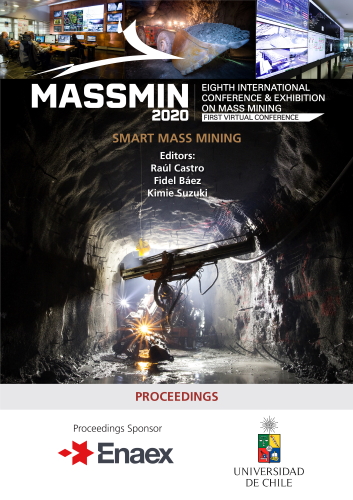Operational and real-time LHD dispatch at Rio Tinto’s Argyle Diamond Mine

|
Authors: Donaldson, SN; Harney, W; Cox, T |
This paper is hosted with the kind permission of Lulea University of Technology, International Conference & Exhibition on Mass Mining, 2024.
DOI https://doi.org/10.36487/ACG_repo/2063_47
Cite As:
Donaldson, SN, Harney, W & Cox, T 2020, 'Operational and real-time LHD dispatch at Rio Tinto’s Argyle Diamond Mine', in R Castro, F Báez & K Suzuki (eds), MassMin 2020: Proceedings of the Eighth International Conference & Exhibition on Mass Mining, University of Chile, Santiago, pp. 693-702, https://doi.org/10.36487/ACG_repo/2063_47
Abstract:
This paper describes the configuration and implementation of both real-time and operational modules of an equipment dispatch tool to Rio Tinto’s Argyle Diamonds. The tool, known as ORB, uses mathematical programming to optimise both operational equipment extraction node assignment, as well as real-time draw point dispatch. It is the first known optimisation-based, autonomous, real-time dispatch tool custom built for underground block cave mining operations. With ORB, Argyle Diamonds benefit from continuously and autonomously co-ordinating the optimal extraction node assignment and dispatch of LHDs in order to achieve a range of objectives while adhering to draw compliance and geotechnical constraints. The paper starts by outlining the pre-existing business planning process, detailing the simple logic that produced the daily draw order and equipment timeline. Next, the motivations for an optimisation-based decision-support tool are presented, drawing comparison to the limitations in existing planning processes. Following this, the optimisation tool developed is outlined, including the data it uses and the objectives it optimises. Finally, a case study of the implementation of the tool to Rio Tinto’s Argyle Diamonds is presented, detailing the benefits it has brought alongside the unique constraints of this heavily restricted block caving environment.
References:
Global Mining Guidelines Group 2019, ‘Guideline for implementing short interval control in underground mining operations’, 1st ed. Available at Accessed 1/9/2019.
Hustrulid, WA 2001, ‘Underground Mining Methods: Engineering Fundamentals and International Case Studies’, Society for Mining, Metallurgy, and Exploration (SME), Littleton.
Khodayari, F & Pourrahimian, Y 2015, ‘Mathematical programming applications in block-caving scheduling: A review of models and algorithms’, International Journal of Mining and Mineral Engineering, vol. 6, pp. 234-257.
Paravarzar, S, Pourrahimian, Y & Askari Nasab, H 2018, ‘Short-Term Underground Mine Planning: A Review’, Mining Optimization Laboratory (MOL), paper 309, pp. 305-334.
© Copyright 2025, Australian Centre for Geomechanics (ACG), The University of Western Australia. All rights reserved.
View copyright/legal information
Please direct any queries or error reports to repository-acg@uwa.edu.au
View copyright/legal information
Please direct any queries or error reports to repository-acg@uwa.edu.au
